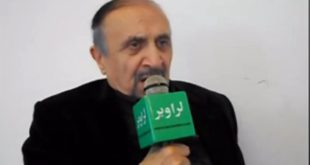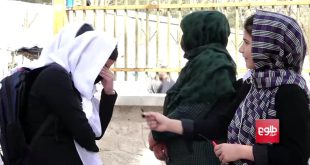Prejudicial Anti-Pashtun Ethnic and Geographic Segregationist Device Employed by Russia and The US to counter and control Ascendant Taliban:
Former Bush Administration Ambassador to India and Envoy to Iraq, Robert Blackwell argues that “since the present US battle-plan is not going to weaken the Taliban, and Pashtun support for the US is not on the horizon, a partition of Afghanistan is the best policy/strategy option available to the US and the division of Afghanistan based on ethnic lines is the best course of action for the U.S. to implement its core security interests.” Blackwell’s divisive segregationist plan closely resembles what the British and Czarist Russian empires experimented with during the 19th Century. Buttressed by sympathetic authors and publishers liberal usage of euphemistic camouflage, epithets also known in the publishing world as an exercise in ‘literary license’, a number of celebrity journalists, essayists and politicians dubbed the ploy the “Great Game”, a calculated term that enjoys a resonance or currency in usage to this day, but in the final analysis, as history cautions, this deadly, biased and divisive strategy had and will again fail miserably upon implementation (4, 6, 7, 8 and 9 and 16).
Under the approach, the Taliban will be allowed only the south, but if they try to attack the north (Northern Alliance), the US will retaliate with massive carpet bombing and surgical operations by elite forces. Many find it surprising that considering the numerous atrocities and indignities visited upon the Pashtun community, that the US would even consider that one day the Pashtuns should want, or would even remotely consider possible, any semblance of support for the US-led war. As far as Ambassador Blackwell’s concern that the US battle plan is not going to weaken the ascendant Taliban, the forces aligned against the Taliban must come to the realization that the Taliban live there and therefore an integral part of Afghanistan. Once again, due to US commissioned (NATO) interference, the Taliban have been placed in an all-consuming, disquieting role of armed opposition to a foreign invasion and occupation, an invasion motivated by resource exploitation in the view of many area specialists, yet for public consumption and approval; justified and supported by US Administrations through selective-use of fabricated incriminations and intelligence-based propaganda (13 and 16).
The alien 19th Century strategy of separation along ethnic lines returned as part of the Soviet war plan drafted in 1981. As a component of Operation Kaskad and Chameleon, and under secret orders from Soviet President Leonid Brezhnev, Soviet KGB strategists enlisted supporters from among the minority Tajik and Uzbek ethnic groups, tasking them with protecting Soviet lines of supply along the Salang Highway and serving as a proxy- militia and counter-force to Hezb-i-Islami, the Soviet 40th Army’s implacable foe (1, 9, 10, 11, 12, 14, 15 and 16).
As reward, in addition to providing Soviet military support and arms transfers for minorities engaged in waging war against their traditional Pashtun enemies, the Soviets made lucrative promises of the annexation and incorporation into the co-ethnic Soviet Central Asian Republics for Afghanistan’s minorities as payment for their collaboration. Then, Jamiat-military leader, the late Ahmad Shah Massoud, had been, as reward for his collaboration, promised a leadership role in any future ‘Greater Tajikistan’ which incorporated Afghanistan’s Tajiks, and which resulted from subsequent successful Soviet secret operations, operations codenamed by the Kremlin as: Kaskad and Chameleon (2,10,11,12,13,14,15 and 16).
From his award-winning book, American Raj, Liberation or Domination, Resolving the Conflict between the West and the Muslim World, author Eric S. Margolis refers to Moscow’s favored candidate, the late Ahmad Shah Massoud, their choice for leader of a to-be-formed, “Greater Tajikistan”, as a longtime asset of the old Soviet KGB, (pp. 13,178 and 196).
Discriminatory Russo/U.S. Device for the Dismemberment of Afghanistan:
Taloqan: Reminiscent of Soviet President Leonid Brezhnev’s 1981 segregationist plan to partition Afghanistan, in February of 2003, the late Burhanuddin Rabbani attended a conference in Taloqan sponsored by the U.S. and Russia at which time a plot was hatched in the name of federalism to divide Afghanistan into seven states (3, 10, 11, 12, 13 and 14). The anti-Pashtun orientation of the Bush Administration financed and fueled the conference, which was reported to have cost $75 million dollars. At the conference were present all factions of the Northern Alliance accompanied by an ever-present throng of Communist generals and party-members (14). According to media sources, high ranking American, British military and intelligence personnel also participated. Also in attendance was the American Counsel-General posted to Mazar-i-Sharif, a city that in 1997 witnessed the slaughter of hundreds of Taliban prisoners of war by retreating Northern Alliance forces.
Behind a façade of advocating a ‘broad-based government,’ Pashtun representatives were arbitrarily denied participation. When this demonstrable discrimination became the focus and subject of inquiring journalists, conference spokespersons gave as explanation that the ‘Pashtun position was unacceptable, and is uncooperative, disruptive and intransigent,’ an accusatory posture taken by the ethnic minority attendees in which they argued would result in the Pashtun’s categorical refutation of the specified plan or any and all devices to divide the country along ethnic lines or other criteria under consideration (4,6, 7,8, 9, 12, 13, 14, 15 and 16).
The details of the US/Russian collaborative-segregation plan are as follows:
Eastern and South Eastern provinces: Nangarhar, Laghman, Paktia, Paktika and Khost to be designated as Pashtunistan. Northern provinces: Hazara, Shirberghan, Saripul, Faryab, Samangan and Kunduz designated as Turkistan. Central provinces: Bamiyan, Ghazni and Wardak designated Hazaraistan. Kandahar, Zabul, Oruzgan and Helmand incorporated as Loay Kandahar. The provinces of Herat, Ghaur, Badghis, and Nimroz designated Ariana. North Eastern provinces of Badakhshan, Takhar and Baghlan designated as Khorasan. Kapisa, Kabul and Logar to be designated Pamir (4, 5, 6, 7, 8, 10, 11, 13, 15, and 16).
The American/Russian plot was adopted by a voice vote consensus and approved without dissent. Thus, the late Burhanuddin Rabbani, flanked by his pro-Moscow contemporaries, had once again acquiesced to a foreign sponsored, divisive plan for Afghanistan modeled on a Soviet-plan of an earlier era. As a result, the majority ethnic group in Afghanistan, the Pashtuns, which according to the WAK Foundation represent (62.73%) of the population were denied representation, due process and a voice in an issue of national, historic and critical importance (6).
Alien forces are yet at work resuscitating the plan for the partition of the country. Outside powers have long held that the major obstacle to their designs to subordinate the Afghan people and extract their mineral wealth, (REE’S) have been fiercely resisted mainly by the Pashtuns, celebrated since the advent of recorded history for their legendary military prowess and resistance to foreign interference. A partition therefore is held as the supreme solution or strategy by the US and Russia for the eventual usurpation and prostration of armed resistance in the country and bringing an end to the fabled strength and resolve of its people to remain as one…intact and sovereign (15). For further validation and research see research-oriented and internationally-accredited publications as listed in the “notes” section below.
Notes:
The Soldiers Story, Maija Leppanen and Yuri Yurchenko, 1994, pp. 113-122
Limited Contingent, Boris Gromov, 1994
The Hand of Moscow, Leonid Shebarshin, 1994
Afghanistan a Search for Truth, ‘Operation Kaskad’, Bruce G. Richardson,pp.59-62, 2009
Ibid
Dawat, Volume 148-149, March/April, 2003, p.3
Afghanistan, a Search for Truth, Bruce G. Richardson, 2009, pp. 251-252
Dawat, Volume 148-149, March/April, 2003, p. 3
Soviets to Embrace Afghan Foe, Christian Science Monitor, Paul Judge Quinn, 1988, pp.1-8
Plamya Afgana, A.A. Liakhovskii, 1999, pp. 485-486
The ‘Lion of the Panjsher’, Main Intelligence Directorate of the USSR (MID), Article No. 18, (No. 882/83-3-5-77, Fond 80, Perechen 14, Document 77. Translation: by Professor Ian Helfant, Department of Slavic Language and Literature, Harvard University.
American Raj, Liberation or Domination? Resolving the Conflict between the West and the Muslim World, Eric S. Margolis, 2008, p.196
Additionally, in the wake of failing negotiations between US energy-conglomerate UNOCAL and the Taliban concerning the Trans Afghan Pipeline (TAP) contract, the plan for dismemberment was viewed as of particular benefit to US corporate oil-magnates vying to gain and exercise control of oil pipeline corridors from the energy-rich Caspian Basin through Afghanistan to Pakistan’s port at Gwadar. See: Gas War, the Truth behind the American Occupation of Afghanistan, by Ted Rall, 2002, and America’s War on Terrorism, by Michel Chossudovsky, 2nd Edition, 2005.
Time to Ditch the Northern Alliance, S. Frederick Starr and Marin Strmecki, Wall Street Journal, February 26, 2002.
A massive, fascinating, masterfully collected, researched and authoritatively assembled historic- based works by a highly-prolific Afghan scientist, scholar and acclaimed author. A recommended read for those authors who seek documented, corroborating facts through engaging in serious research and study while reviewing the long agony of Afghanistan, an unnecessary agony the result of decades of foreign interference, intrigue, war, collaboration, superpower competition, aggression, invasion and occupation beginning 1979-present. See: Communications by Members of the Afghan Diaspora about Events in Afghanistan to US Leaders, the UN and World Leaders September 21, 1979-October 7, 2013, by Professor of Economics Emeritus, Dr. M. Siddieq Noorzoy, 2013.
Afghanistan, Political Frailty and External Interference, Dr. Nabi Misdaq, 2006.
 لراوبر ویب پاڼه لراوبر يو افغان – تازه خبرونه
لراوبر ویب پاڼه لراوبر يو افغان – تازه خبرونه


